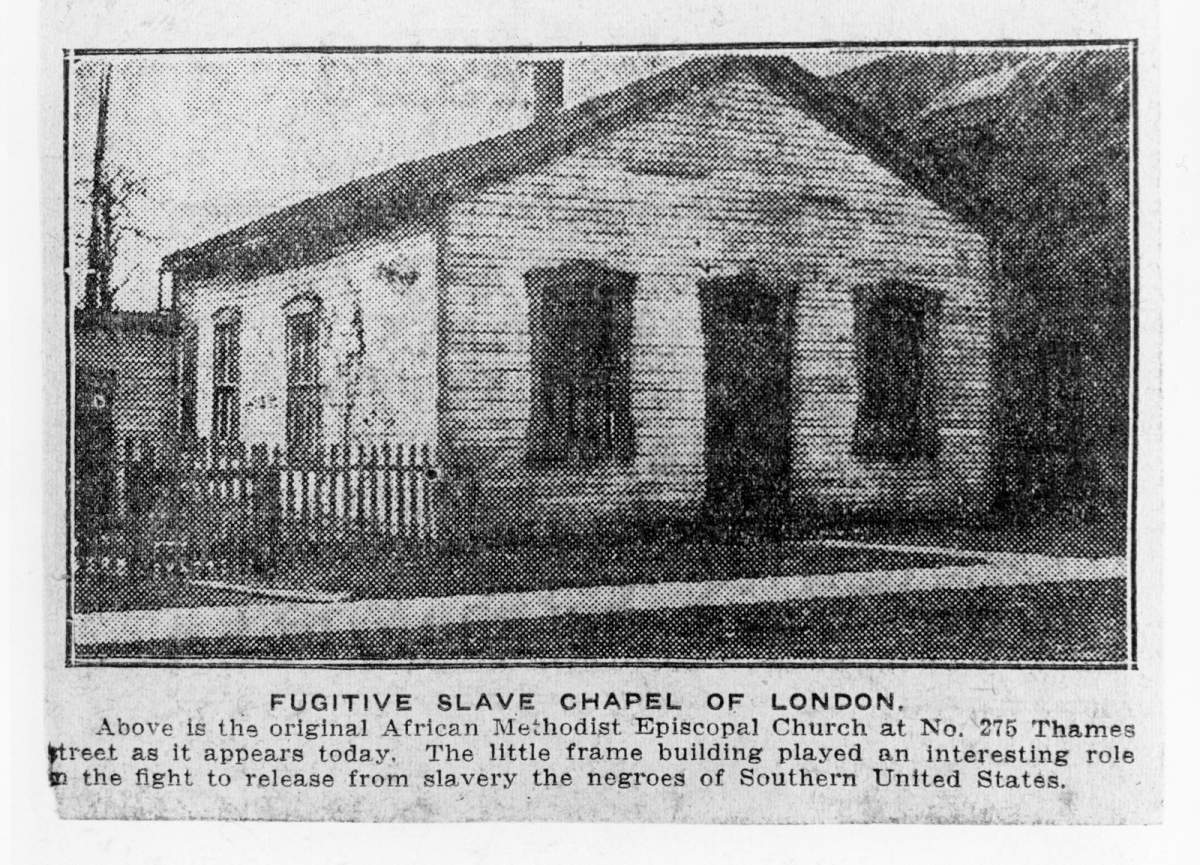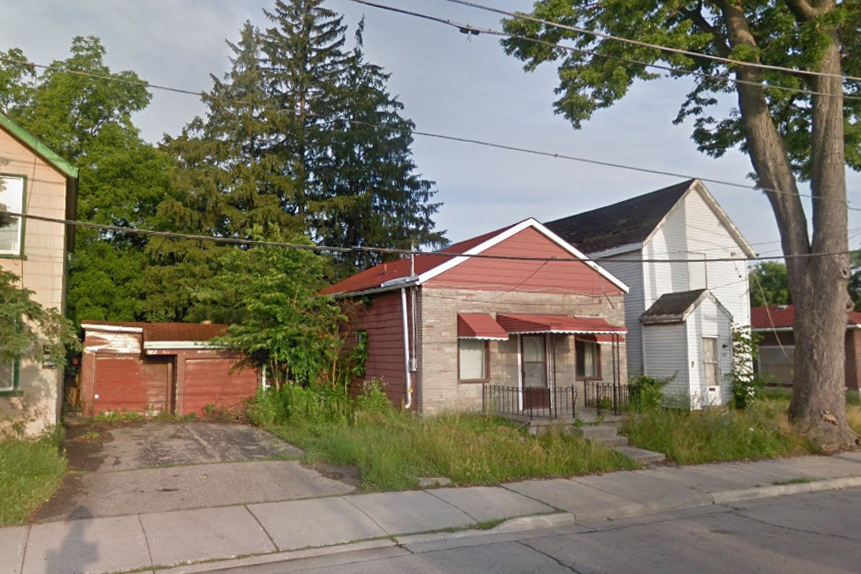The ongoing fundraising campaign to relocate London, Ont.’s historic Fugitive Slave Chapel to Fanshawe Pioneer Village (FPV) and restore it is $50,000 closer to realizing its goal thanks to a major donation from a local developer, officials with the village unveiled Wednesday.

The donation, made by London-based Ironstone Building Company, puts the fundraising campaign “on the doorstep” of its $300,000 target, Dawn Miskelly, the village’s executive director, told Global News.
The campaign aims to relocate the 174-year-old structure permanently from its home on Grey Street to Fanshawe Pioneer Village where it will be restored and used to educate future generations.
“That contribution is a great step forward and gives us the confidence to begin and continue moving things forward,” Miskelly said.
“We’re inching in on that $300,000 goal. We have a few other things that are still just in the works that we’ll share with the community shortly, but we’re definitely on the doorstep of that goal.”
David Stimac, Ironstone’s president, took part in a cheque presentation ceremony outside the chapel on Wednesday involving Miskelly, FPV board member Christina Lord and steering committee member Harold Usher.
“London is full of so many historical treasures that many of us take for granted. The Fugitive Slave Chapel is a key historical symbol of London’s Black community,” Stimac said in a statement released by the village.
“Our team at Ironstone is honoured to make a contribution to help relocate, restore and preserve this structure in its new home at the Fanshawe Pioneer Village. We look forward to seeing the completed project.”
The chapel, originally the African Methodist Episcopal Church, was erected in 1848 at 275 Thames St., serving as a sanctuary for African Americans who had escaped slavery in the U.S. through the Underground Railroad and who had built homes in what is now known as SoHo.
In 1856, the chapel became the British Methodist Episcopal Church, and 13 years later was replaced by a new building on Grey Street, according to the London Public Library. The old chapel remained on Thames Street where it was used as a private residence for decades.

Get daily National news
Public outcry spared the chapel from the wrecking ball in 2013, and a community effort saw the small structure lifted and relocated by truck to its current home on Grey Street in November of 2014, next door to the church that had replaced it nearly a century and a half earlier.
In August of 2021, the British Methodist Episcopal Church of Canada, which owns the building, entered into talks with the village to gift the chapel so it could be relocated and preserved, prompting the fundraising campaign which began earlier this year.
Citing the building’s deteriorating condition, village officials have said they hope to move the chapel to the village before the winter weather arrives.
Miskelly says the project has cleared some necessary city hall hurdles, and over the summer received the green light on a heritage alteration permit, a requirement to remove the building from the heritage designated property.
Necessary building permit applications have also been submitted and contractors have been sourced for the foundation work at the village, she says. In addition, talks began over the summer with movers to begin planning the logistics of the complex move itself.
“We’re really hopeful that we can get that all coordinated and still move the building before the winter, so probably at some point in November.”
Miskelly says the village hopes to have the chapel restored and opened to the public at some point in the summer of 2023.
In May, the campaign received a $50,000 donation from Drewlo Holdings and a $5,000 donation from the Diocese of London, while in April, city councillors unanimously endorsed a motion to have city hall provide a $71,000 grant to the campaign through the municipal Community Investment Reserve Fund.
Information on how to donate to the campaign can be found on the London Community Foundation’s website. Corporate or community groups looking to contribute directly to Fanshawe Pioneer Village can contact Miskelly via email at director@fanshawepioneervillage.com.















Comments